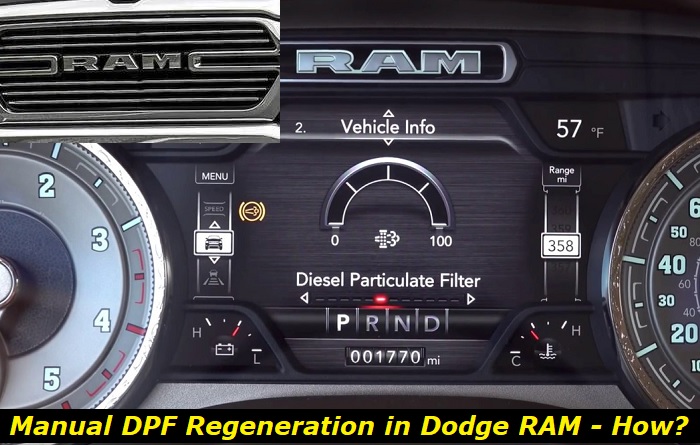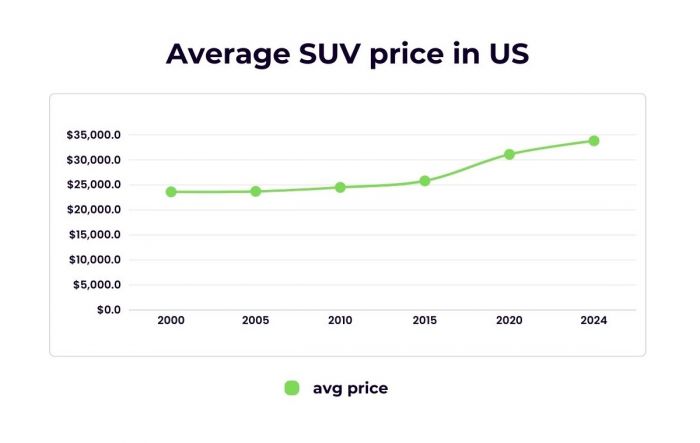The diesel particulate filter (DPF) serves an important purpose in your Ram. The primary role of this is to reduce the harmful gases produced by its exhaust. However, as you will learn here, there are many other benefits provided by this component.
One good feature of the DPF is that you don't need to have it maintained frequently, except for the recommended service intervals of your auto manufacturer. This is because it has a way of automatically burning off the gathered soot in its system along the way.
But then again, there may be instances where it might fail to do its job properly. So, in this article, we will show you just how you can go around this particular dilemma to guarantee your compliance with the pollution laws in your area while ensuring the ideal performance of your Ram.

The Important Function of the DPF
The DPF is an essential component of modern vehicles with diesel engines. It works by filtering out soot particles from exhaust gases, reducing the amount of pollution released into the atmosphere. The DPF captures harmful pollutants such as carbon monoxide and hydrocarbons, preventing them from entering the environment. This helps reduce air pollution and improve air quality in areas where diesel-powered cars are common.
In addition to protecting the environment, a properly functioning DPF also has many benefits for car owners. For example, it can help your vehicle operate more efficiently by reducing engine load and improving fuel economy. Moreover, a clean DPF increases power output while decreasing noise levels and engine vibration. Finally, regular maintenance and cleaning of your DPF can help extend the life of your vehicle's exhaust system.
How the DPF Regeneration Process Works
The DPF is designed to capture soot particles over time. When the filter becomes too clogged, it needs to be "regenerated" in order for it to continue functioning properly and save your engine. Regeneration is a process where the pollutants are burned off in high-temperature exhaust gases. This is done either passively as your vehicle is driven long distances or actively when the system injects fuel into the exhaust stream.
Passive regeneration occurs when the vehicle reaches the ideal operating temperature of its exhaust as it is driven on the highway. As soon as the temperature reaches a predetermined point by the computer of the vehicle, it automatically burns off the accumulated soot in its system until it is reduced to ash.
Meanwhile, active regeneration occurs when the vehicle's computer forces the injection of additional fuel into the exhaust system. This happens when the auto is not normally driven long distances and when the accumulated soot is typically around 45% of the DPF's limit. The added fuel helps create higher temperatures that allow for more complete burning of trapped soot particles inside the DPF.
It's important to note that regular maintenance and cleaning of your DPF can help extend its life, reduce emissions, and improve your vehicle's fuel economy. Be sure to check your owner's manual for the recommended service intervals for your specific model. It's also important to have the DPF inspected by a certified technician periodically to ensure that it is functioning properly.
Reasons to Force a DPF Regeneration Manually
The system works by itself in ensuring that your vehicle is free from carbon accumulation in its system to ensure its fuel efficiency and emissions as well as provide the other aforementioned benefits. However, there may be scenarios when it might be a good idea to force a manual DPF regeneration in your Ram, and these are the following:
1. When the soot level is unusually high
If your DPF has accumulated a greater amount of soot than usual, then manually forcing a regeneration can help in restoring the filter's efficiency and reduce emissions more quickly.
2. When the vehicle has been idle for too long
If you have left your vehicle unused for an extended period of time and its engine coolant temperature is not reaching high enough levels to trigger passive regeneration, then manual regeneration should be considered.
3. Poor fuel quality
Low-grade fuel or contaminated diesel can lead to a higher accumulation of soot inside the DPF, and forcing a manual regeneration may be necessary to restore it back to optimum condition.
4. When the DPF is blocked
If your DPF is completely blocked and passive regeneration is no longer an option, then manual regeneration will be necessary to clear it. This also applies if something is preventing the system of your vehicle to run an active regeneration.
5. When a fault code has been triggered
If a fault code related to the DPF or EGR system of your Ram vehicle has been detected, then manual regeneration may help in resolving any issues with these components.
Steps on How to Do a Manual DPF Regeneration in Ram Vehicles
If any of the conditions in the previous section are present, then, it's time for you to do a manual DPF regeneration in your Ram. Before doing so, make sure that you have the necessary tool for this.
You can easily find different DPF Regen Diagnostic Tools online. Just be sure to read their reviews or seek advice from an automotive technician to determine the best tool for your ride.
Some of the steps that will be mentioned here may vary slightly depending on the kind of tool you are using and the model of your Ram, but the process commonly follows these:
- Ensure that the vehicle's engine is running correctly and in good condition.
- Address any other fault code appearing in your diagnostic tool that may prevent your DPF from running normally.
- Monitor the coolant temperature of your vehicle using a scan tool or code reader to make sure that it has reached at least 212°F (100°C).
- Start a manual regeneration cycle by selecting the proper option from the menu of your diagnostic scan tool depending on your specific model. Your Ram may be equipped with either "Regen Active" or "DPF Regeneration Active" for diesel-powered vehicles, so make sure you look for this option before proceeding with the next step.
- After starting the cycle, monitor all related parameters such as fuel level, exhaust backpressure, EGR valve, and so on to ensure that they are working properly.
- Wait until the DPF regeneration process is completed. This could take anywhere from 20-45 minutes depending on your specific model of Ram vehicle.
- Once the cycle has been completed, check if any fault codes were triggered during the manual regeneration process and make sure to clear them before turning off the engine. If you detect any issues, then it's best to have your vehicle inspected by a certified technician as soon as possible.
- Remove any residual ash from the DPF system after finishing the regeneration cycle using an appropriate tool or product designed for this purpose to prevent clogging in other components of your exhaust system. Be sure to follow the instructions on the product's label for the best results.
- After the DPF system has been cleaned and any fault codes have been cleared, you can now turn off the engine and restart it once again after a few minutes in order to make sure that your vehicle is running correctly.
- Finally, check if the fuel economy of your Ram vehicle has improved after forcing a manual regeneration cycle, and adjust driving habits accordingly to maintain its peak performance over time. It's also important to have an expert technician inspect your DPF periodically to keep it working at optimal efficiency and ensure that it is not clogged or blocked with soot or other debris.
Things to Avoid When Forcing a Manual Regeneration in the Ram DPF
To safeguard your vehicle and your well-being, there are important factors that you should bear in mind when forcing a manual regen in the DPF of your Ram, these include the following:
- Do not attempt to force a manual regeneration cycle if the coolant temperature of your vehicle has not reached the ideal operating temperature of at least 212°F (100°C).
- Do not keep the engine running for more than 60 minutes during the regeneration process, as it could damage its components or cause other problems with your exhaust system.
- Do not keep the engine running if you notice any fault codes or indicators related to your DPF system (especially NOx, EGR Valve, Exhaust Pressure, and Fuel Level), as these are signs of a malfunctioning DPF.
- Do not attempt to clean the DPF with improvised tools such as compressed air or pressurized water, as these methods may damage the filter and cause further issues.
- Do not forget to clear any DTCs that may have been triggered during the regeneration cycle before turning off your engine to prevent future problems with your vehicle's exhaust system and fuel economy.
Conclusion
Overall, there are several situations where manually forcing a DPF regeneration in your Ram vehicle may be beneficial. This can help reduce emissions while improving fuel economy and extending the life of its exhaust system.
Be sure to check your owner's manual for the recommended service intervals and consult with a certified technician if needed. Doing so can help ensure that you are getting the most out of your vehicle.
About the authors
The CarAraC research team is composed of seasoned auto mechanics and automotive industry professionals, including individuals with advanced degrees and certifications in their field. Our team members boast prestigious credentials, reflecting their extensive knowledge and skills. These qualifications include: IMI: Institute of the Motor Industry, ASE-Certified Master Automobile Technicians; Coventry University, Graduate of MA in Automotive Journalism; Politecnico di Torino, Italy, MS Automotive Engineering; Ss. Cyril and Methodius University in Skopje, Mechanical University in Skopje; TOC Automotive College; DHA Suffa University, Department of Mechanical Engineering






Add comment